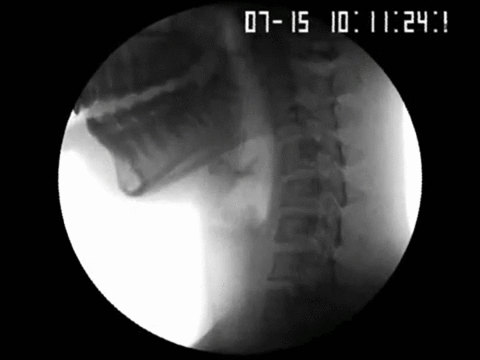Bro 1: Bro Do U Know What My Fav Periodic Element Is
bro 1: bro do u know what my fav periodic element is
bro 2: what is it bro
bro 1: bromine
bro 2: bro why
bro 1: cause bro ur all mine
bro 2: b rO WTF BROoo
More Posts from Drunkscience4u and Others

Mole-cool

The ancestor of all vertebrates, including fish, reptiles and humans was a big mouth but apparently had no anus.
The microscopic creature named Saccorhytus, after the sack-like features created by its elliptical body and large mouth, lived 540 million years ago. It was identified from microfossils found in China.
“To the naked eye, the fossils we studied look like tiny black grains, but under the microscope the level of detail is jaw-dropping,” says team member Simon Conway Morris, of the University of Cambridge, in the UK.
Researchers believe it was about a millimetre in size, lived between grains of sand on the sea bed and had a large mouth relative to the rest of its body.
They also think the creature was covered with a thin, relatively flexible skin, had some sort of muscle system which could have made contractile movements and allowed it to move by wriggling.
Continue Reading.
Please subscribe, like, comment, and donate! Next episode April 1, 2017. Starring: Candice Lola Directed by Rebecca Berger Produced by Rebecca Berger and Candice Lola Written by Candice Lola Editing, Color, Sound Design by Rebecca Berger Animation by Rachael K McDonald Links: Music: http://ift.tt/1JICaNj and http://ift.tt/2lquxdO http://ift.tt/2lINlQJ http://ift.tt/2lqtjzr http://ift.tt/2lIL08B http://ift.tt/2lqvuCQ (Donations are always welcome!) http://ift.tt/2lITyw7 http://ift.tt/2lqvQJO






The Strangest Eclipse Fact Of All: The Moon’s Shadow Isn’t A Circle
“These imperfections along the edge of the lunar limb don’t just reflect peaks and valleys on the Moon’s surface, but result in sharp edges and corners appearing on the Moon’s shadow as well. Thanks to incredibly accurate mapping of elevation of the entire lunar surface by NASA’s Lunar Reconnaissance Orbiter, we know exactly what the profile of the Moon looks like. Combine that information with the Earth-Moon-Sun orbit, and we can derive what irregularities will be present during the August 21st, 2017 (or any) solar eclipse, when the Moon’s shadow passes across Earth’s surface.”
The Moon is spherical, and so its shadow should be a circle by simple geometry, right? Only, if we view it when it strikes Earth, it’s not even close to a circle. It’s stretched into an ellipse, and further complicated by irregular, sharp edges and corners. Why would it appear that way? As it turns out, three factors combine to get us there. The first is the fact that Earth is a sphere, not a disk, so any shadow falling on it gets stretched. The second is that the Moon’s sharp peaks, valleys and craters mean that its shadow gets irregularly distorted in a way that changes as its orbit continues. And the third is that Earth isn’t smooth, but exhibits significant changes in elevation and terrain.
Add them all up, and you’ve got the incredibly bizarre and ever-changing shape of the Moon’s shadow. Come see what the eclipse of August 21, 2017 will hold!







Chemistry Valentine’s Cards by Nick Uhlig.









Black Hole Caught Devouring Star For An Entire Decade
“Normally lasting weeks or months, a new record has just been set for TDEs. XJ1500+0154, 1.8 billion light years away, is the largest, longest-lasting one ever seen. First detected in July of 2005, the X-rays from this distant source brightened by a factor of 100 over 3 years. They remain bright even today. Although dozens of TDEs have been observed since the 1990s, none have lasted this long. It may be caused by the most massive star ever observed creating a TDE.”
When any object passes too close to the event horizon of a black hole, the tidal forces acting on it can become so strong that they’ll tear the entire object apart in a spaghettification disaster. While most of the matter will get ejected from the encounter, a significant fraction can be accreted, absorbed and used to fuel the black hole’s growth. These tidal disruption events have been seen numerous times since the launch of our X-ray observatories, and are now known to come in a wide variety of magnitudes, at a variety of distances and to last a variable amount of time. So when you see the largest, longest-lasting one ever, you sit up and take notice! That’s exactly what’s happened with XJ1500+154, which is now in its second decade of X-ray signals.
Come get the full story on this amazing object, and learn how it might solve the puzzle of supermassive black hole growth on today’s Mostly Mute Monday!
-
 catslide033 liked this · 10 months ago
catslide033 liked this · 10 months ago -
 determinednature liked this · 11 months ago
determinednature liked this · 11 months ago -
 canonically-insane-hoe liked this · 11 months ago
canonically-insane-hoe liked this · 11 months ago -
 whotookmytomato liked this · 11 months ago
whotookmytomato liked this · 11 months ago -
 transitranger327 liked this · 11 months ago
transitranger327 liked this · 11 months ago -
 rhiannon-taken-by-the-sky liked this · 11 months ago
rhiannon-taken-by-the-sky liked this · 11 months ago -
 gamelpar reblogged this · 11 months ago
gamelpar reblogged this · 11 months ago -
 fuck-i-made-a-mistake liked this · 2 years ago
fuck-i-made-a-mistake liked this · 2 years ago -
 seraroses-blog liked this · 3 years ago
seraroses-blog liked this · 3 years ago -
 iamhowlingmad liked this · 4 years ago
iamhowlingmad liked this · 4 years ago -
 allthefandomsyoucanaskfor reblogged this · 4 years ago
allthefandomsyoucanaskfor reblogged this · 4 years ago -
 drippingindazzle reblogged this · 4 years ago
drippingindazzle reblogged this · 4 years ago -
 sammypeaches liked this · 4 years ago
sammypeaches liked this · 4 years ago -
 raptorjesus-mf liked this · 4 years ago
raptorjesus-mf liked this · 4 years ago -
 tuba-david reblogged this · 4 years ago
tuba-david reblogged this · 4 years ago -
 warriorrbunny liked this · 4 years ago
warriorrbunny liked this · 4 years ago -
 vampirehouse reblogged this · 4 years ago
vampirehouse reblogged this · 4 years ago -
 bensonnick liked this · 4 years ago
bensonnick liked this · 4 years ago -
 thealexkingsley reblogged this · 4 years ago
thealexkingsley reblogged this · 4 years ago -
 maybe-so-dot-gif reblogged this · 4 years ago
maybe-so-dot-gif reblogged this · 4 years ago -
 pirateofaltia liked this · 4 years ago
pirateofaltia liked this · 4 years ago -
 pepper-pea-blog1 liked this · 5 years ago
pepper-pea-blog1 liked this · 5 years ago -
 no-ana-only-antelopes reblogged this · 5 years ago
no-ana-only-antelopes reblogged this · 5 years ago -
 starstruck-pendulums reblogged this · 5 years ago
starstruck-pendulums reblogged this · 5 years ago -
 starstruck-pendulums liked this · 5 years ago
starstruck-pendulums liked this · 5 years ago -
 truthisoutwhere reblogged this · 5 years ago
truthisoutwhere reblogged this · 5 years ago -
 imagoofygubler liked this · 5 years ago
imagoofygubler liked this · 5 years ago -
 harry-wilson reblogged this · 5 years ago
harry-wilson reblogged this · 5 years ago -
 11rarelights liked this · 5 years ago
11rarelights liked this · 5 years ago -
 brabe reblogged this · 5 years ago
brabe reblogged this · 5 years ago -
 sin-nay liked this · 5 years ago
sin-nay liked this · 5 years ago -
 pbandjtime81 liked this · 5 years ago
pbandjtime81 liked this · 5 years ago -
 gretahayes-archive liked this · 5 years ago
gretahayes-archive liked this · 5 years ago -
 mrfulanodetal liked this · 5 years ago
mrfulanodetal liked this · 5 years ago -
 kaisoosworldsblog liked this · 5 years ago
kaisoosworldsblog liked this · 5 years ago -
 gaymanzlol-blog liked this · 6 years ago
gaymanzlol-blog liked this · 6 years ago -
 megamocny2137 liked this · 6 years ago
megamocny2137 liked this · 6 years ago -
 justwanttobefound reblogged this · 6 years ago
justwanttobefound reblogged this · 6 years ago -
 justwanttobefound liked this · 6 years ago
justwanttobefound liked this · 6 years ago -
 carlestin liked this · 6 years ago
carlestin liked this · 6 years ago -
 wholettheratloose liked this · 6 years ago
wholettheratloose liked this · 6 years ago
The official page of Drunk Science! An enthusiastic host performs simple experiments and then humorously explains the science behind the result, all while visibly drunk.
126 posts

